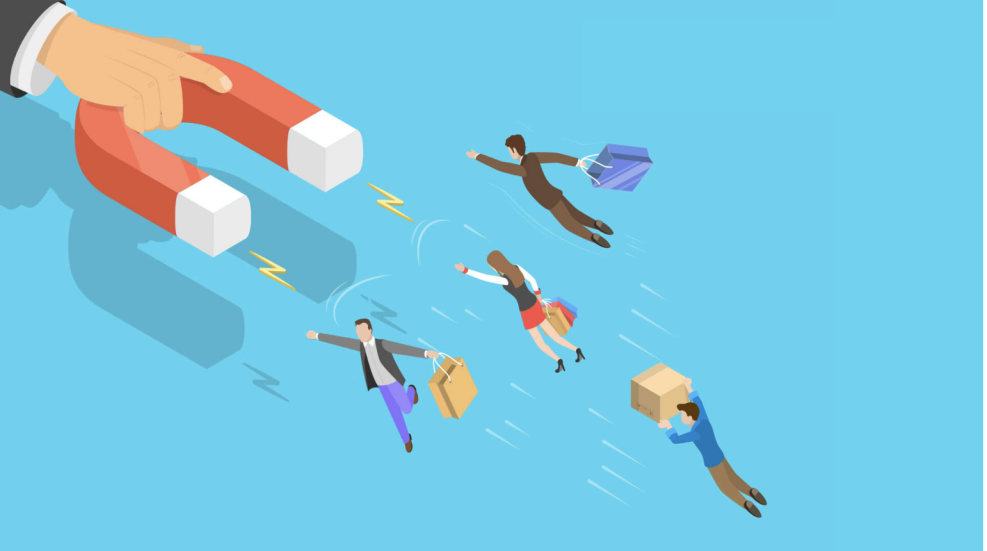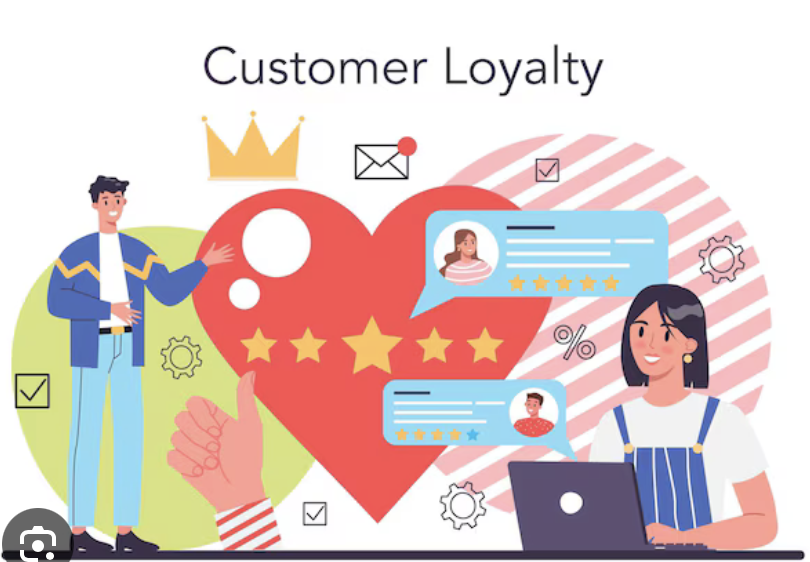It’s one of the biggest myths in business: If someone buys from you once, they’ll buy from you again.
Wrong.
Getting a customer through the door for the first time can be expensive, time-consuming, and energy-draining — but keeping them? That’s where the real profit lies. Studies show that acquiring a new customer can cost five times more than retaining an existing one, and repeat customers spend 67% more than first-timers.
Yet, brand loyalty isn’t just about offering a great product at a fair price. It’s about crafting an emotional connection so deep that your customers actively choose you — even when cheaper or faster alternatives exist.
The best brands don’t just sell. They become part of their customers’ identities. And to do that, they tap into psychology.
1. The First Impression Is Everything
We’re all wired to make judgments fast. In fact, the human brain forms a first impression in just 50 milliseconds — faster than it takes to blink.
Your first interaction with a potential customer is your make-or-break moment. That “interaction” could be:
A social media ad
A product display in a store
A conversation at a networking event
Or even how your packaging looks when they receive your product
Think about brands like Apple. Their packaging is practically a love letter to the customer — clean, premium, intentional. You feel like you’ve bought an experience, not just a gadget.
Actionable Tip: Audit your customer journey from the very first touchpoint. Does it feel consistent, intentional, and aligned with your brand promise? If not, fix it before you spend another dollar on advertising.

2. Trust Is the Real Currency of Loyalty
Loyalty is built on trust — and trust is fragile.
Customers need to believe that you’ll deliver on your promises every single time. And if you break that trust, you don’t just lose a sale; you might lose them forever.
Take Amazon. Love it or hate it, their entire business model thrives because people trust they’ll get what they ordered quickly, at the right price, with an easy return option if things go wrong.
Ways to Build Trust:
Offer clear, upfront policies (returns, warranties, shipping timelines)
Showcase real customer reviews and testimonials
Be transparent about product limitations — honesty beats hype
If a brand is caught lying or hiding information, the backlash can be swift and brutal (just ask Volkswagen after the emissions scandal).
3. Personalization Isn’t a Luxury — It’s a Necessity
We’re living in the era of hyper-personalization. Customers now expect brands to know their preferences, needs, and buying habits — sometimes even before they do.
Think about Spotify’s “Discover Weekly” playlists. It’s not just a music recommendation tool; it’s a personal DJ who gets you. That personal connection turns casual listeners into lifetime subscribers.
How to Personalize Without Being Creepy:
Use purchase history to recommend relevant products
Segment your email marketing for different customer types
Send thank-you notes or exclusive offers to loyal buyers
Even small gestures — like addressing a customer by name or remembering their past orders — can spark long-term loyalty.
4. Build a Community, Not Just a Customer Base
A product can be copied. A price can be undercut. But a passionate community? That’s hard to steal.
Brands like Harley-Davidson have built entire subcultures around their products. When you buy a Harley, you’re not just buying a bike — you’re joining a brotherhood.
Why community matters:
It gives customers a sense of belonging
It transforms transactions into relationships
It creates free word-of-mouth marketing
Action Steps:
Host events (online or offline) for your customers
Create social media groups where fans can connect
Encourage customers to share their experiences with your brand
When your customers feel like they’re part of something bigger, they’ll defend your brand as fiercely as they promote it.
5. Reward Loyalty in Meaningful Ways
If customers are loyal, reward them — not just with discounts, but with experiences.
Starbucks Rewards gives customers free drinks, birthday perks, and exclusive offers.
Sephora’s Beauty Insider Program offers early access to new products, beauty classes, and personalized recommendations.
It’s not about bribing customers to stay. It’s about making them feel appreciated, valued, and recognized.
6. Storytelling: The Secret Sauce of Emotional Connection
People don’t connect with products. They connect with stories.
Why do people pay more for a Rolex than for a perfectly functional Casio watch?
It’s not the time-telling capability. It’s the story — of heritage, prestige, craftsmanship, and exclusivity.
Your Brand Story Should:
Be authentic (real struggles, real wins)
Show your “why” — the reason you exist beyond making money
Connect to your customers’ own values and aspirations
If your brand disappears tomorrow, will your customers miss you? The answer depends on the strength of your story.
7. Consistency Is King
Customers need to know exactly what to expect from you every time. Consistency isn’t boring — it’s reassuring.
Think about Coca-Cola. Whether you drink it in New York, Nairobi, or New Delhi, it tastes the same, the logo is the same, and the experience is the same. That’s why it’s one of the most recognized brands in the world.
Consistency Checklist:
Visual branding (logo, colors, fonts)
Tone of voice (formal, casual, playful)
Product quality
Customer service experience
When every interaction feels familiar, customers feel safe. And when customers feel safe, they stick around.
8. The Long Game: Patience Pays Off
Building brand loyalty is like growing a tree. You can’t plant a seed today and expect shade tomorrow.
The process takes time, effort, and consistent nurturing.
Here’s the mindset shift:
Focus less on one-time transactions
Focus more on lifetime relationships
Your most loyal customers often become your most effective marketers — unpaid, authentic brand ambassadors who tell your story better than you ever could.
Case Study: Apple’s Cult-Like Loyalty
Apple’s fans aren’t just customers — they’re evangelists. They’ll line up overnight for a product they’ve never even seen in person. Why?
Consistent experience across all devices
Premium design that feels aspirational
Community culture (Apple events are basically tech concerts)
Clear brand story of innovation and creativity
Apple doesn’t sell phones and laptops. They sell the feeling of being part of the future.
Final Words
Brand loyalty is the holy grail of business growth. It can’t be faked, rushed, or bought with a coupon code. It’s the product of years of trust-building, emotional connection, and delivering value consistently.
If you can make your customers feel seen, heard, and valued — and if you can wrap that feeling into a story they’re proud to tell — you won’t just win sales. You’ll win hearts.
And once you’ve won a customer’s heart, their wallet tends to follow.
















